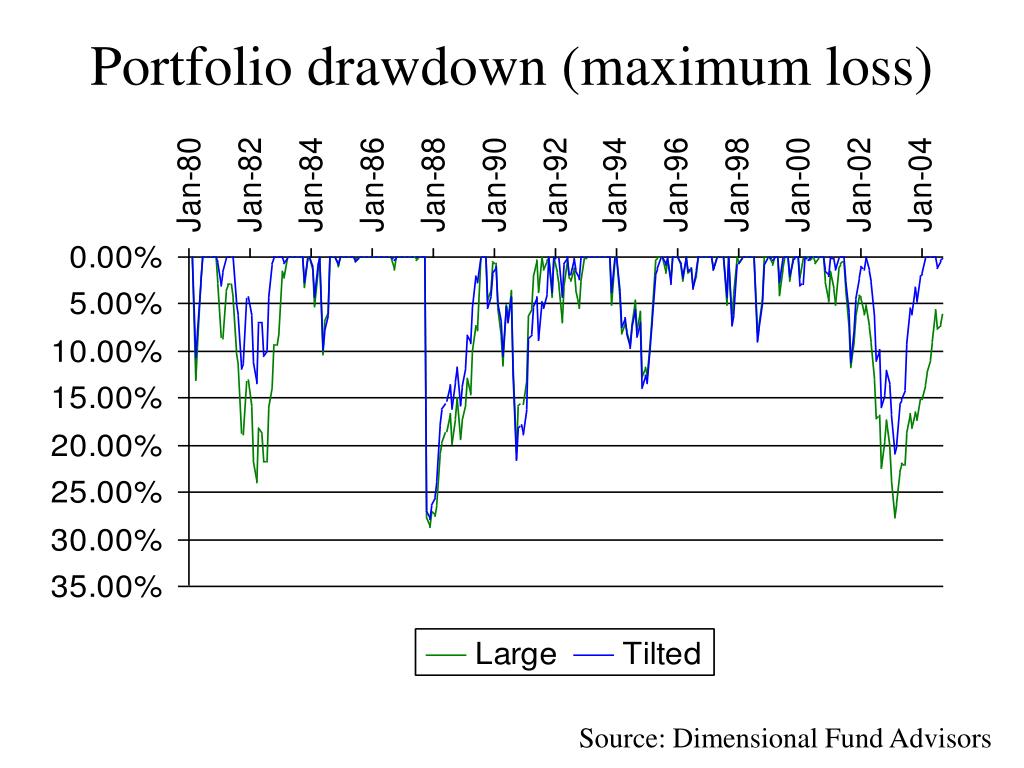

- #PORTFOLIO DRAWDOWN PANDAS HOW TO#
- #PORTFOLIO DRAWDOWN PANDAS CODE#
- #PORTFOLIO DRAWDOWN PANDAS PLUS#
We'll cover some of the most popular practical techniques in modern, state of the art investment management and portfolio construction.Īs we cover the theory and math in lecture videos, we'll also implement the concepts in Python, and you'll be able to code along with us so that you have a deep and practical understanding of how those methods work. We'll start with the very basics of risk and return and quickly progress to cover a range of topics including several Nobel Prize winning concepts. In this course, we cover the basics of Investment Science, and we'll build practical implementations of each of the concepts along the way. This course is the first in a four course specialization in Data Science and Machine Learning in Asset Management but can be taken independently. However, instead of merely explaining the science, we help you build on that foundation in a practical manner, with an emphasis on the hands-on implementation of those ideas in the Python programming language. This course provides an introduction to the underlying science, with the aim of giving you a thorough understanding of that scientific basis. Use it to help manage your risk.The practice of investment management has been transformed in recent years by computational methods.

It’s a useful indicator of the riskiness of a stock, portfolio, or strategy. returns.rolling(30).apply(max_drawdown).plot(kind="area", color="salmon", alpha=0.5)ĭrawdown and max drawdown focus on capital preservation. Then it moves forward one day, computes it again, until the end of the series. Max_drawdown applies the drawdown function to 30 days of returns and figures out the smallest (most negative) value that occurs over those 30 days. To use rolling statistics, check out this issue of The PyQuant Newsletter.

The max drawdown differs from the drawdown by tracking the maximum drawdown of a 30-day rolling window of returns. Next, I use the drawdown to compute a max drawdown chart. This chart shows SPY dropping 33.7% from its peak to trough return in 2020. drawdown(returns).plot(kind="area", color="salmon", alpha=0.5) Return (cumulative - running_max) / running_maxĪnd the plot. # compute the change between the cumulative return Running_max = np.maximum.accumulate(cumulative) # np.maximum.accumulate takes the running max value Accumulate tracks the running maximum value which is perfect for keeping tabs on the peak return.įinally, I compute the percentage difference between the cumulative and peak returns.
#PORTFOLIO DRAWDOWN PANDAS PLUS#
Then I create a cumulative return series which is the cumulative product of 1 plus the return. I replace it with a 0.0 to compute cumulative returns.

When computing returns, the first value is turned into np.nan. Step 2: Create the drawdown functionĭrawdown is computed with 4 lines of code. I want to keep it simple so I use the S&P500 ETF. Drawdown is usually computed with the returns of a portfolio. I use yfinance to get stock data – in this case, SPY. Then I get data and compute the simple returns. I start by importing the libraries I need. Today I’m going to walk you through it step by step. Unfortunately, most people don’t consider drawdown when managing their investments. Computing it helps you compare the relative riskiness between assets or strategies. Every trading strategy experiences drawdowns.
#PORTFOLIO DRAWDOWN PANDAS HOW TO#
In today’s issue, I’m going to show you how to compute the drawdown of the SPY ETF with Python.ĭrawdown is the maximum decline from peak to trough during a specific period before a new peak is reached.


 0 kommentar(er)
0 kommentar(er)
